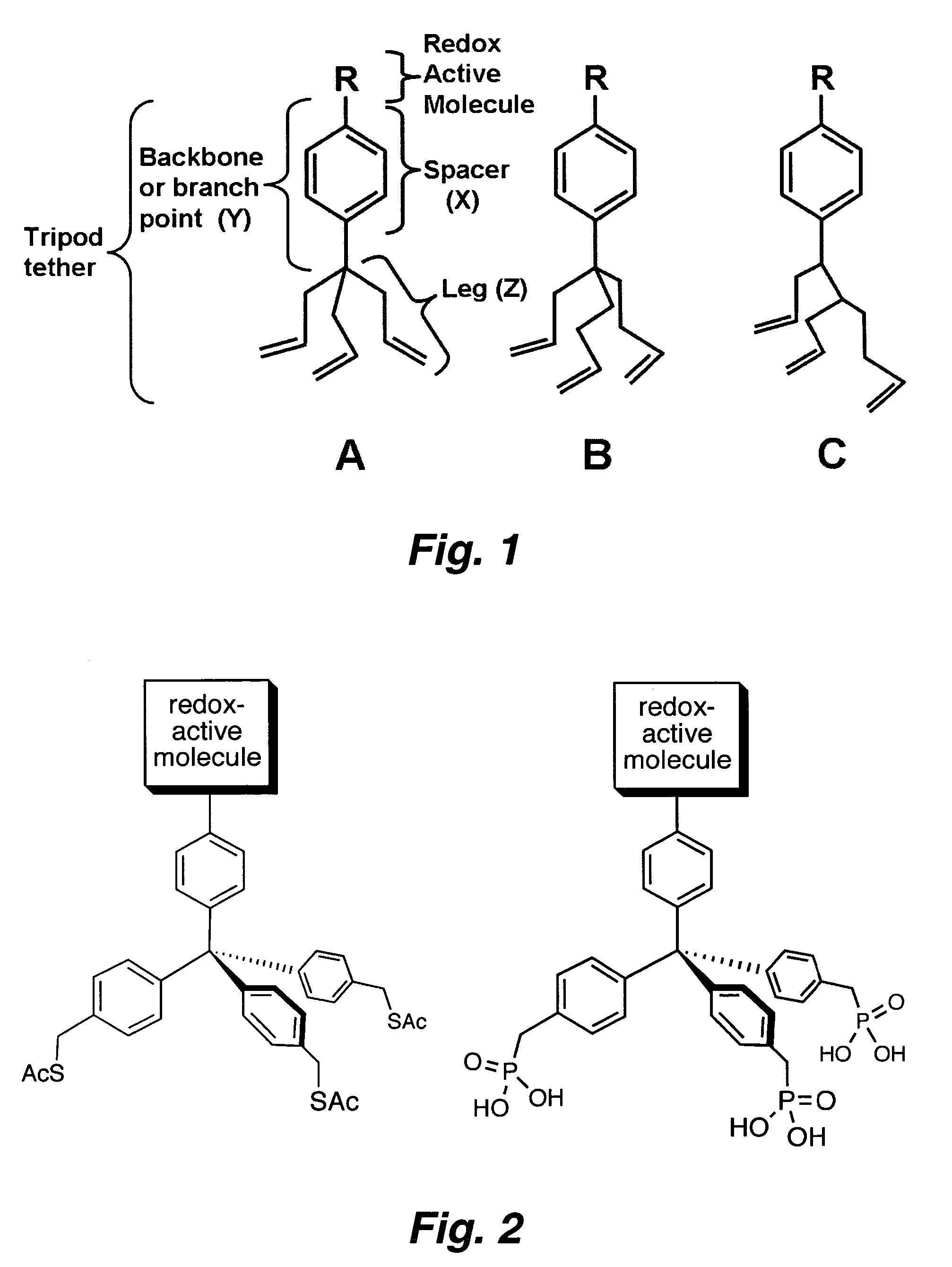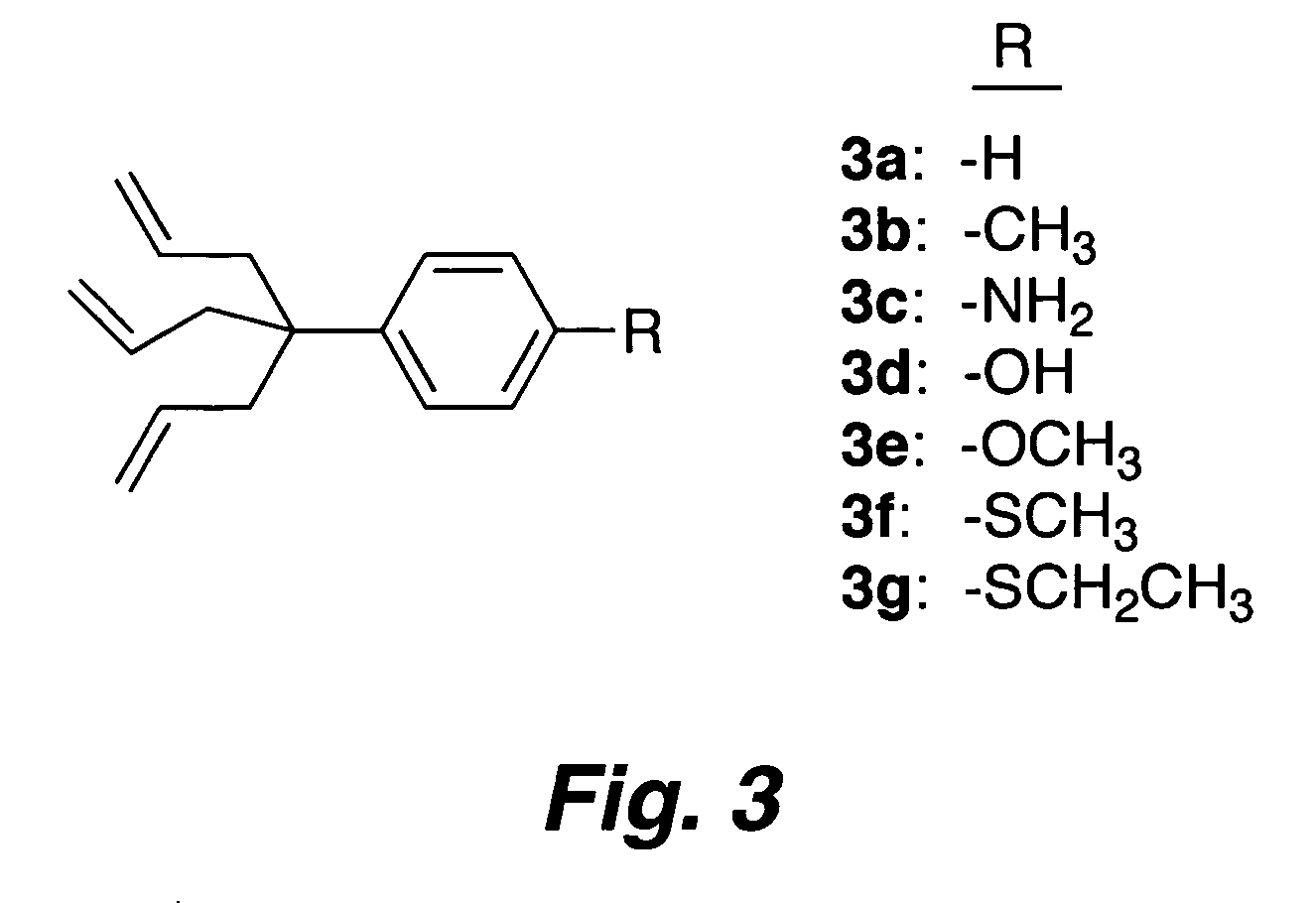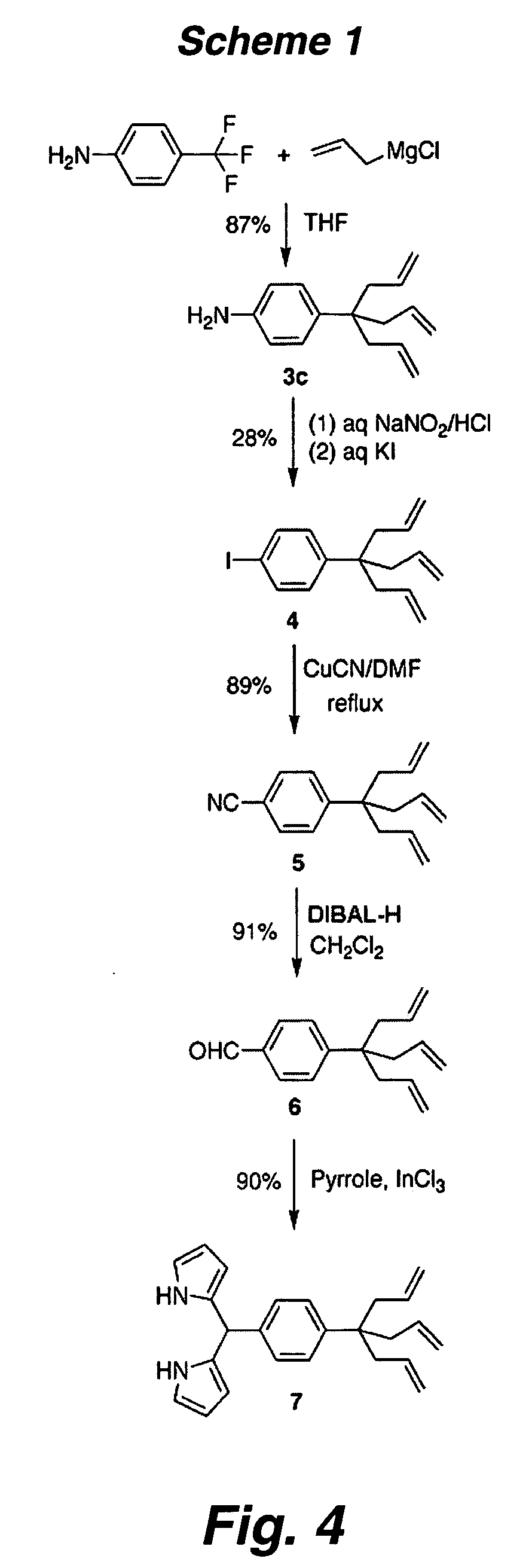Multypodal tethers for high-density attachment of redox-active moieties to substrates
a redox-active moiete, high-density technology, applied in the field of molecular memory elements and polypodal tethers, can solve the problems of limiting substrate and/or redox-active molecule degradation pathways, and achieve the effects of increasing surface coverage, increasing charge storage density, and increasing charge density
- Summary
- Abstract
- Description
- Claims
- Application Information
AI Technical Summary
Benefits of technology
Problems solved by technology
Method used
Image
Examples
example 1
[0309] A Compact All-Carbon Tripodal Tether Affords High Coverage of Porphyrins on Silicon Surfaces
[0310] Redox-active molecules designed to give high charge density on electroactive surfaces are useful for applications in molecular information storage. To achieve a small molecular footprint, and thereby high surface charge density, a compound consisting of a triallyl tripod attached via a p-phenylene unit to a porphyrin (1) has been synthesized. The zinc chelate of 1 (Zn-1) was attached to Si(100). Electrochemical measurements indicate that the molecular footprint (75 Å) in the monolayer is only ˜50% larger than the minimum achievable, indicating high surface coverage. IR spectroscopy indicates the bands due to the ν(C═C) (1638 cm−1) and γ(CH) (915 cm−1) vibrations present in the solid sample (KBr pellet) are absent from the spectra of the monolayers of Zn-1, consistent with saturation of the double bond in each of the three legs of the tripod upon the hydrosilylation process acco...
example 2
Synthesis of Porphyrins Bearing Three Alcoholic Groups in a Tripodal Architecture for Studies in Molecular Information Storage
[0339] The synthesis of a zinc porphyrin bearing three alcohol groups in a tripodal architecture is described. The porphyrin was prepared via a Suzuki coupling reaction of a meso-substituted boronic ester porphyrin and a masked tripodal alcohol aromatic bromo compound. The resulting masked alcohol porphyrin and its fully deprotected trialcohol porphyrin were found to attach to a variety of electroactive surfaces [Si(100), TiW, TiN, and WN].
Introduction
[0340] One approach to increase the charge storage density is to employ redox-active molecules (e.g., porphyrins) that possess a multipodal (e.g., a tripodal) surface attachment group. Such systems are anticipated to yield surface attached layers of redox-active molecules (ReAMs) having increased stability and / or higher charge storage density. Without being bound to a particular theory, it is believed that s...
example 3
Preparation of Porphyrin Bipods Containing an Activating Group and Porphyrins Containing a Heteroatom-Based Bipodal Chain
[0371] This example describes a synthesis methodology for the facile preparation of bipodal redox-active molecules (e.g., porphyrins) bearing an activating group at the key quaternary carbon atom. Judicious choice of activating group allows later removal of the same resulting in the preparation of otherwise unsubstituted bipodal linkers attached to redox-active molecules.
[0372] Alternative routes to such bipodal tethers are available that do not require an activating group at the key quaternary carbon. Such routes provide access to bipodal tethers where the non-linking carbon substituent can be H, alkyl, or aryl.
[0373] In certain embodiments, preparation of a novel class of porphyrin molecules, bearing a bipodal linker group, is accomplished by making use of an aryl-bonded activating group, such as cyano, carbalkoxy, alkyl- or aryl sulfonyl, etc., in such a way...
PUM
| Property | Measurement | Unit |
|---|---|---|
| Electric potential / voltage | aaaaa | aaaaa |
| Dielectric polarization enthalpy | aaaaa | aaaaa |
| Composition | aaaaa | aaaaa |
Abstract
Description
Claims
Application Information
 Login to View More
Login to View More - R&D
- Intellectual Property
- Life Sciences
- Materials
- Tech Scout
- Unparalleled Data Quality
- Higher Quality Content
- 60% Fewer Hallucinations
Browse by: Latest US Patents, China's latest patents, Technical Efficacy Thesaurus, Application Domain, Technology Topic, Popular Technical Reports.
© 2025 PatSnap. All rights reserved.Legal|Privacy policy|Modern Slavery Act Transparency Statement|Sitemap|About US| Contact US: help@patsnap.com



